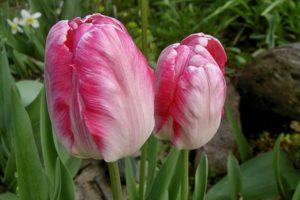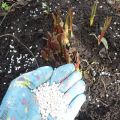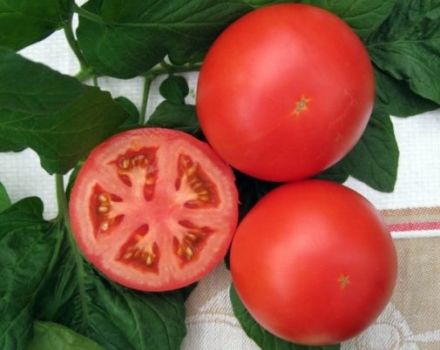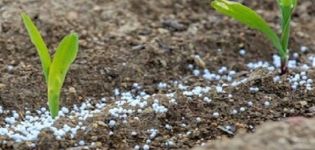Description and characteristics of the Black Parrot tulip, planting and care
Tulip varieties Black Parrot (Black Parrot) belongs to the class of parrots. It is a late flowering, unpretentious, perennial, bulbous plant. With proper care and timely planting, tulips bloom profusely and delight gardeners with maroon and unusually beautiful flowers. Black Parrot blooms closer to summer. Tulips are grown for landscape decoration or for sale.
Content
Description and characteristics of the tulip Black Parrot
Black Parrot blooms at the very end of May, once, but abundantly. The flowering period is about 2-3 weeks. The flowers are large, up to 10 centimeters in size. The petals of the flowers are twisting, corrugated, reminiscent of the plumage of exotic parrots. Color - maroon, turning into purple, thin greenish areas are seen somewhere. The flower has zigzag edges of the petals. The diameter of the bud is about 20 centimeters.
This variety grows up to 45-50 centimeters. Black Parrott has a tall, erect and sturdy stem. Leaves are oblong, smooth, green, slightly bluish. About 2-4 leaves grow at the bottom of the stem. Black Parrott loves well-lit places, but can grow in partial shade.
Origin story
Black Parrot is from the Netherlands. This variety was developed in the first half of the 20th century by genetic mutation. The source material was the natural gene pool. Most garden parrot tulips are native to Central Asia. From there they came to Europe in the 17th century, and then these beautiful, graceful flowers that did not require too painstaking care were noticed by Russian gardeners. Black Parrot is grown for landscaping or for cutting for sale.
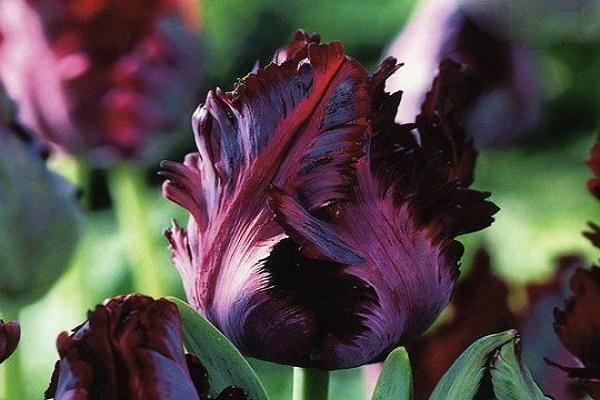
Planting a parrot tulip
Black Parrott is propagated with the help of bulbs (mother and children who grew up near her). Tulips are planted in soil fed with organic matter and mineral fertilizers. Bulbs for planting are taken dense, without damage, without overgrown roots and stems.
Black Parrot blooms at the end of May. When the plant has faded (mid-June), the bulbs are dug out of the ground. They are dried, warmed up all summer, and then stored in a cool room until the end of September, and then again buried in the ground. Until the plant withers completely, the stem cannot be cut off. The nutrients must return to the bulb and replenish it with energy for new growth.
Black Perrot is dug up annually in the summer and buried in the ground again in the fall. Every 3 or 4 years, they choose a new place for a flower bed.
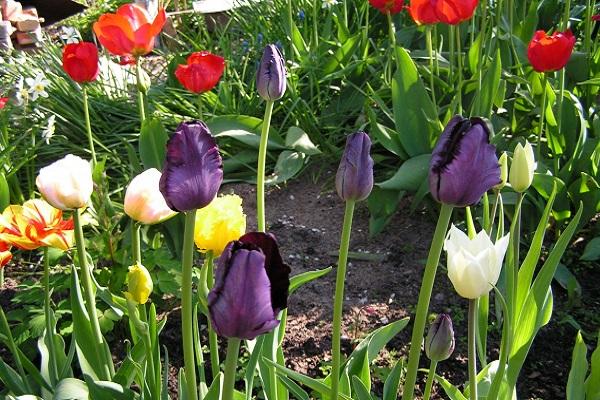
Choosing and preparing a place for planting a flower
Black Parrott can grow in any soil, but prefers well fertilized, loose, drained soil. Tulips can be planted on loam and sandy loam soil. Too clay soil is diluted with sand and peat. The plant loves alkaline or neutral soil. If the soil is acidic, a little lime or wood ash is added to it.
The tulip planting site must be protected from the wind. There should be no tall plants nearby. The sun's rays should be free to hit the tulips. Flowers are usually planted in special flower beds. The land on such a site is leveled, all large lumps are broken. If the surface is uneven, with pits, the water in the flower bed will stagnate, causing the bulbs to rot.
Preparing tulip bulbs
Before planting, the bulbs are placed in water for 2 hours. A few drops of Fundazole are added to the liquid for disinfection from fungus and diseases. The bulbs can be "pickled" for 60 minutes in a slightly pink solution of potassium permanganate.

Landing technology
Black Parrot bulbs are planted in the fall when the soil temperature drops to 10 degrees Celsius. In the Middle Strip, this time corresponds to the second half of September, early October. The bulbs are buried in the ground to a depth of 10-15 centimeters. It is desirable that the distance between adjacent plants be from 10 to 20 centimeters. After planting, tulips are watered moderately. Before frost, the ground is mulched from above with sawdust or a layer of spruce branches.
The flowerbed turns out to be very beautiful if varieties of white tulips are planted next to Black Parrot. There should be no more than 40 bulbs per square meter.
Plant care
It is recommended to water Black Parrot regularly during dry season. The land where this plant grows needs to be loosened, fed and weeded from weeds.
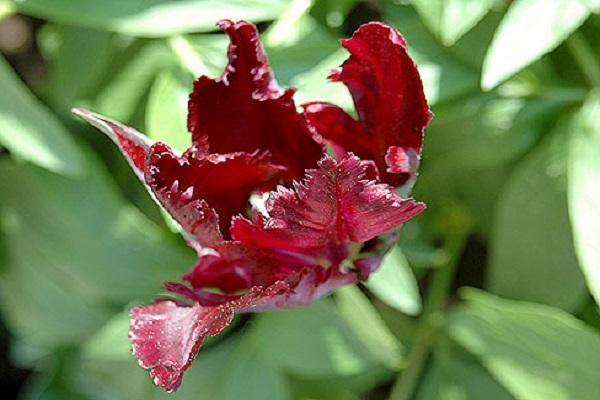
Watering and feeding
It is recommended to water tulips during dry season. Watering is carried out once a week. A plot of 1 square meter requires 6 liters of settled soft water.
During the autumn planting of bulbs, the soil itself is pre-fertilized with organic matter, potassium and phosphorus substances. In early spring, tulips are fed with nitrogen (ammonium nitrate, ammonium nitrate), phosphorus (superphosphate) and potassium (potassium sulfate). At the time of laying the buds, the roots of the plant are fertilized again. To feed the flowers, they buy complex fertilizers in the store (Kemira, Universal 2, Azofoska). After fertilization, tulips are watered abundantly with water.
Wintering
For the winter, the plants are covered with a thick layer of mulch. The soil is mulched with hay, peat, sawdust, straw, dry foliage, spruce branches. When the snow melts and the air temperature warms up to 10 degrees Celsius, the mulch is removed from the soil. The plant must be allowed to germinate.
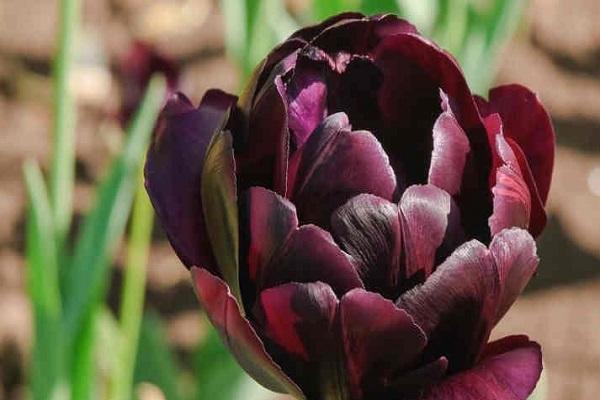
Potential diseases and pests. Tulip protection
Black Parrot is prone to various diseases (fungal, viral, non-infectious). Diseased plants are removed from the flower bed so that they do not infect healthy flowers. To protect tulips from diseases, preventive measures are taken. Before planting or after removing from the ground, the bulbs must be soaked for 60 minutes in a solution of potassium permanganate or treated with fungicides (Fundazol).
Diseases and methods of struggle:
- Viral (August disease).
Affects the bulb, stem and flowers. Brown spots appear on the plant. Diseased tulips are removed from the garden and destroyed. The rest are treated with disinfectant solutions (potassium permanganate, soda solution).
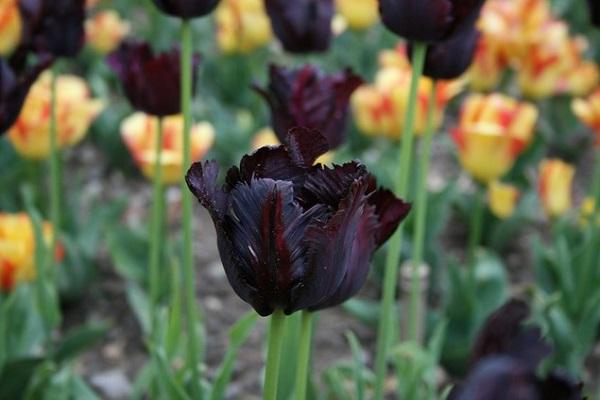
- Fungal (fusarium, gray rot).
The disease affects the bulbs. They start to rot and dark spots appear on them. A diseased tulip does not grow well, it has small flowers. Diseased plants are removed. The rest are sprayed with a solution with the addition of Euparen or Bordeaux liquid.
- Non-infectious (calcification, tumors or blue discoloration of the bulbs, drooping flowers, blind buds).
Each type of disease has its own causes. For example, drooping of flowers occurs when there is a lack of calcium in the soil. The disease can occur if the bulb is dug up too early, but it has not had time to ripen and accumulate nutrients. To prevent the disease, you must first select quality material for planting. It is recommended to apply top dressing to the ground on time.
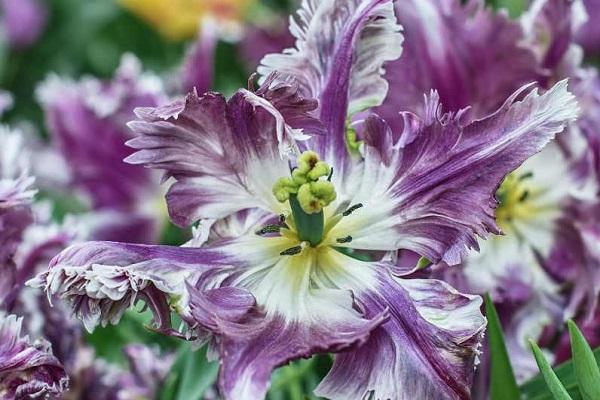
Pests of tulips can be slugs, snails, aphids, bears, nematodes, and root onion tick. Insecticides are used to control insects. The soil is regularly dug up, loosened, and pests are removed from it.
Ammonium nitrate or ammonium sulfate is added under the root. These fertilizers nourish plants, but create unfavorable conditions for insect reproduction.

